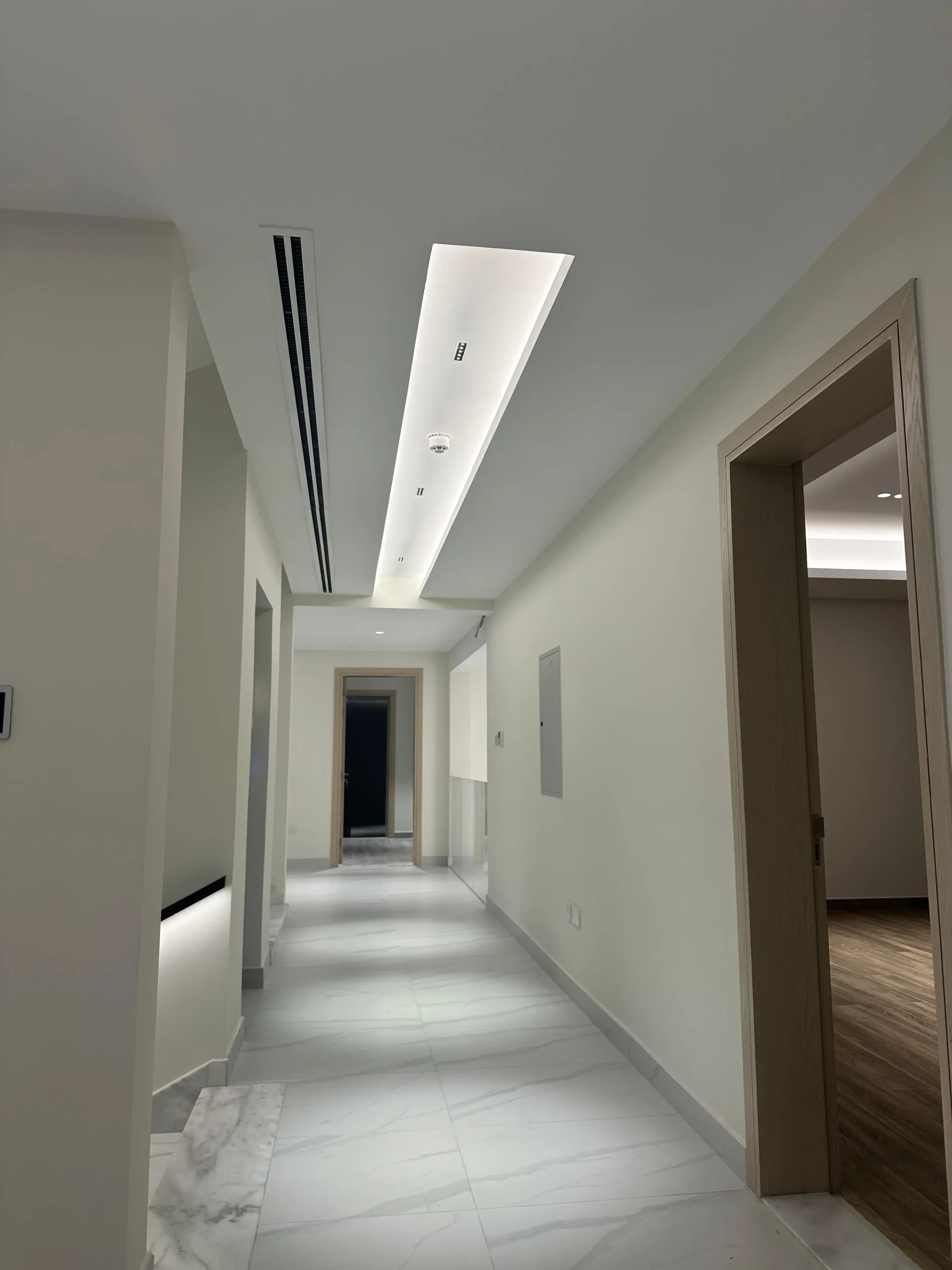Fluorescent lighting has been a mainstay in both residential and commercial spaces for decades. Known for its efficiency and long lifespan, fluorescent lighting remains a preferred choice in various settings. As we transition into a future dominated by smart homes and energy-efficient devices, the role of fluorescent lights continues to evolve. In this article, we will explore the importance of fluorescent lighting in interior design, its relationship with smart appliances, and its benefits compared to other light sources.
The Importance of Fluorescent Light in Interior Design
Fluorescent lights have a unique ability to provide bright, even illumination while being energy-efficient. This makes them a popular choice for a variety of interior design applications, from kitchens to offices. Their versatility allows them to be used in a wide range of settings, from large commercial spaces to more intimate areas in the home. In fact, fluorescent lighting helps enhance the ambiance and functionality of a room by providing clear, uniform light that is perfect for reading, cooking, or working.
One key advantage of fluorescent lights is their ability to offer different color temperatures, allowing designers to choose the ideal lighting to complement a room’s color scheme. For example, cool white fluorescent lighting works well in modern spaces that feature sleek, neutral tones, while warmer tones are better suited for creating a cozy, inviting atmosphere in living rooms or bedrooms.
The most important information you should know about fluorescent lighting:
1. Fluorescent Light and Smart Appliances: A New Era of Connectivity
With the rise of smart home devices, fluorescent lighting has entered a new phase of integration. Smart appliances, such as connected thermostats, smart bulbs, and home security systems, can now sync with fluorescent lights to create a cohesive, energy-efficient environment.
The relationship between fluorescent lights and smart home devices is particularly beneficial in terms of energy management. For instance, using motion sensors with fluorescent lighting can help conserve energy by ensuring lights are only on when a room is occupied. Additionally, dimming controls and timers can be programmed to adjust the light’s intensity or automatically turn off when no one is present.
2. Common Questions About Fluorescent Lighting
-Do LED lights eventually stop working like incandescent bulbs?
Yes, LED lights, like incandescent bulbs, eventually stop working, but they have a much longer lifespan. While incandescent bulbs typically burn out after 1,000 hours of use, LED bulbs can last 25,000 hours or more. The difference lies in the technology used. LEDs are more efficient and durable, reducing the frequency of replacements.
-Is it possible to replace a fluorescent tube bulb with an LED bulb without causing damage to the fixture?
Yes, it is possible to replace a fluorescent tube with an LED tube, but it depends on the type of fluorescent fixture you have. There are direct-replacement LED tubes that work in the same fixture as the fluorescent bulb, but it’s important to check compatibility. In some cases, rewiring the fixture might be necessary for the LED to work correctly.
-What are the differences between an ordinary light bulb and a fluorescent light bulb in terms of brightness?
Fluorescent bulbs are generally brighter than standard incandescent bulbs. They produce more light per watt of energy consumed, making them more energy-efficient. The brightness of a bulb is typically measured in lumens, and fluorescent lights provide a higher lumen output compared to incandescent bulbs, offering better illumination.
-How much do consumers save by using compact fluorescent light (CFL) bulbs?
Consumers can save up to 75% on energy costs by using CFL bulbs compared to traditional incandescent bulbs. While CFLs cost more upfront, their energy efficiency and longer lifespan make them a more cost-effective choice in the long run.
-Which is the rechargeable bulb?
Rechargeable bulbs are typically LED bulbs with built-in batteries that can be charged and used during power outages. These bulbs are designed to provide temporary lighting in the event of a power failure.
-How do lights burn out?
Lights burn out due to several factors, including the degradation of the filament in incandescent bulbs, the failure of the ballast in fluorescent lights, or the breakdown of LED components over time. In general, the lifespan of a light depends on its type, usage, and the quality of the bulb.
-What’s the finest color of bulb to use?
The ideal color of a bulb depends on the intended use of the light. For general illumination, a daylight white (5000K) bulb is often preferred, as it mimics natural sunlight. For cozy, relaxing environments, a warm white (2700K) bulb is better suited.
-Is it possible to convert from fluorescent to LED bulbs without changing wiring or sockets?
Yes, some LED bulbs are designed as direct replacements for fluorescent bulbs, allowing users to swap them out without needing to rewire or change the socket. However, in some cases, especially with older fixtures, rewiring may be necessary.
-Why do we still use CFL and tube lights instead of LED bulbs, even though they consume more power?
CFL and tube lights are still in use because they are often less expensive upfront than LED bulbs. Additionally, in certain industrial or commercial settings, the lighting infrastructure may be designed for fluorescent technology, making it more cost-effective to maintain existing fixtures rather than upgrade to LEDs.
-What are the benefits of using energy-saving bulbs compared to ordinary ones (excluding LEDs)?
Energy-saving bulbs, such as CFLs, consume less power than traditional incandescent bulbs. They produce the same amount of light while using a fraction of the energy, which translates into lower electricity bills and a smaller environmental footprint.
-What’s the best type of light bulb color?
The best color of a light bulb depends on the intended use. Warm light is ideal for creating cozy, relaxing spaces, while cool or daylight bulbs are better for tasks that require concentration, such as in kitchens, offices, or reading areas.
-When do you have to start using compact fluorescent light bulbs (CFLs) in the UAE?
The UAE government has been promoting energy efficiency for years, and CFLs are now commonly used in both residential and commercial buildings as part of the country’s sustainability initiatives. Starting in the early 2010s, the UAE began phasing out incandescent bulbs in favor of more energy-efficient options like CFLs and LEDs.
-Which bulb is best for using at home?
LED bulbs are the best for use at home due to their energy efficiency, long lifespan, and versatility. However, compact fluorescent bulbs are still a good option for certain areas, such as bathrooms or hallways, where light is needed for longer periods.
-What are the benefits of using LED or CFL bulbs compared to incandescent bulbs? Is it recommended to replace incandescent bulbs with LED or CFL?
LED and CFL bulbs offer significant benefits over incandescent bulbs, including lower energy consumption, longer lifespans, and reduced environmental impact. Replacing incandescent bulbs with LED or CFL is highly recommended as it will reduce electricity bills and the frequency of bulb replacements.
3. Key Fluorescent Light Fixtures and Their Components
When considering fluorescent lighting for your space, it’s essential to choose the right fixtures to ensure optimal performance. The key components of fluorescent light fixtures include:
- Fluorescent Light Ballast: This is a critical component that regulates the current flowing through the bulb. It ensures that the bulb receives the correct amount of energy to function efficiently. Without a ballast, a fluorescent bulb would not work correctly.
- Fluorescent Light Covers: These are protective coverings that help diffuse the light, preventing glare while enhancing the aesthetic appeal of the lighting. They also protect the bulb from damage.
- Fluorescent Light Holder: The holder securely holds the fluorescent bulb in place. It ensures a stable connection between the bulb and the fixture.
4. Fluorescent Light Color Trends 2025: Green and Yellow
Fluorescent light colors can play a significant role in shaping the atmosphere of a space. Two popular fluorescent colors that are expected to remain on trend are:
- Fluorescent Light Green: This color creates a fresh, natural ambiance and works well in spaces where a calm and rejuvenating atmosphere is desired. It is especially popular in eco-friendly or wellness-oriented environments.
- Fluorescent Light Yellow: Yellow lighting can add warmth and a welcoming feel to a space. It’s a great choice for areas that require ambient lighting, such as living rooms or lounges.
Why Instant Lighting Designs The Latest 2025 Trends?
- Quick Installation & Energy Efficiency
Instant lighting is becoming popular due to its fast installation and energy-saving features. This makes it an ideal choice for both home and commercial spaces. - Variety of Options
Instant lighting is available in various forms, such as sleek recessed lights and flexible strip lights. These lights can be installed easily on walls, ceilings, or under furniture for a versatile lighting solution. - Instant Brightness
With LED technology, instant lighting provides immediate brightness without the usual warm-up time, offering convenience and efficiency. - Smart Integration
Many instant lights can be controlled through smart home systems, allowing you to adjust brightness and color to match the ambiance you desire. - Customization
Instant lighting solutions can change colors and brightness, providing the flexibility to create different moods and settings in a space with minimal effort.
Best Places to Install Instant Lighting for Maximum Impact
- Green Instant Lighting in Landscapes
- Installing green instant lighting in indoor landscapes or outdoor gardens enhances the natural beauty of plants.
- The green light adds a sophisticated touch and promotes a calming atmosphere, perfect for relaxation or hosting guests.
- Under Kitchen Cabinets
- Instant lighting under kitchen cabinets provides practical task lighting while adding a modern touch to the kitchen.
- It improves visibility for cooking and enhances the overall aesthetic of the space.
- Along Staircases
- Installing instant lighting along staircases not only adds safety but also creates a dramatic effect, guiding the way with style.
- In Living Rooms to Highlight Features
- Instant lighting in living rooms can highlight artwork, architectural features, or key furniture pieces, giving the room a luxurious and chic vibe.
- In Commercial Spaces (Restaurants & Cafes)
- For restaurants or cafes, instant lighting can create an inviting, cozy environment.
- Strategically placed lights can enhance the overall dining experience by providing soft, ambient lighting.
If you’re in need of a single fluorescent light wiring diagram, or assistance with choosing the right fixtures for your space, feel free to contact us. We offer expert guidance and provide high-quality fluorescent lights and customized planning for your lighting needs.
- Quick Installation & Energy Efficiency



